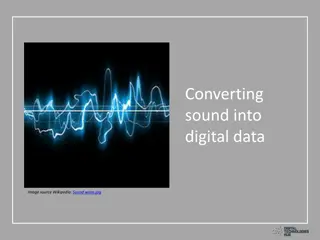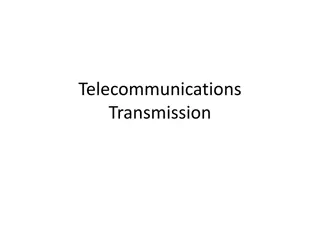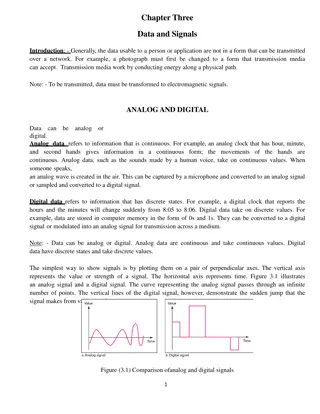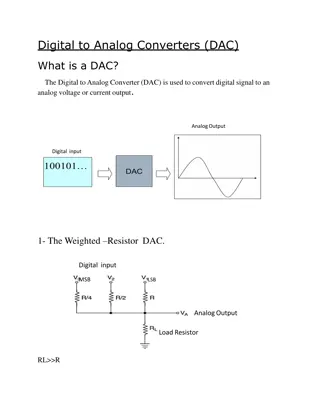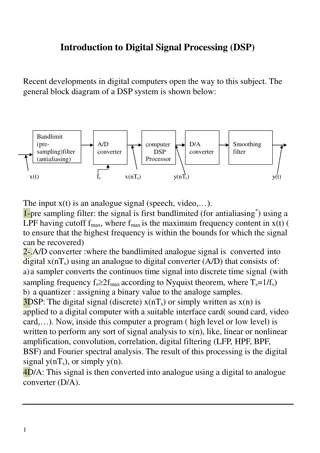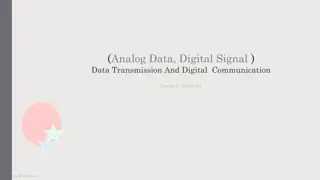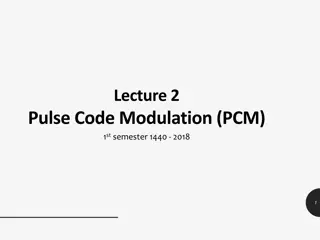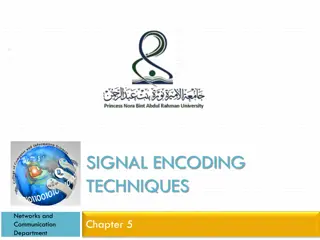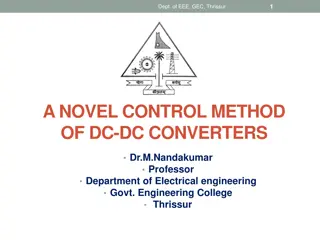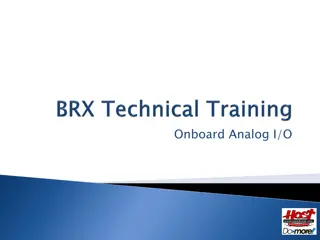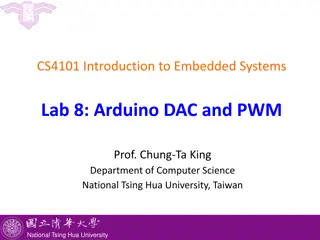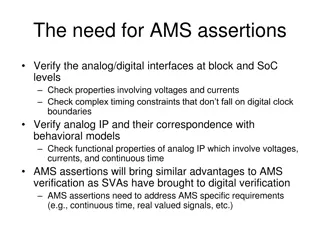
Understanding Analog to Digital Converter Basics
Explore the fundamentals of Analog to Digital Converters (ADC) in ECE academic labs with slides by Zachary Chan. Learn about ADC, sampling rate, Nyquist rate, Nyquist frequency, resolution, and more key concepts essential for converting analog signals to digital in microcontrollers.
Download Presentation

Please find below an Image/Link to download the presentation.
The content on the website is provided AS IS for your information and personal use only. It may not be sold, licensed, or shared on other websites without obtaining consent from the author. If you encounter any issues during the download, it is possible that the publisher has removed the file from their server.
You are allowed to download the files provided on this website for personal or commercial use, subject to the condition that they are used lawfully. All files are the property of their respective owners.
The content on the website is provided AS IS for your information and personal use only. It may not be sold, licensed, or shared on other websites without obtaining consent from the author.
E N D
Presentation Transcript
ANALOG TO DIGITAL CONVERTER GT ECE ACADEMIC LAB SLIDES BY ZACHARY CHAN
OVERVIEW Also known as ADC Converts analog signals (signals with continuous values and can change at a continuous rate like light, sound, temperature) to digital signals (signals with discrete values like electrical signals 0V and 5V) Microcontrollers understand digital signals ADC s sample the analog signal, then determine the resolution of the signal, then sends digital signals
SAMPLING RATE How often the ADC samples the analog signal Can also be thought of as frequency If the sampling rate is too low, then the digital output will be a poor representation of the analog signal Poor representations are called aliases
NYQUIST RATE The Nyquist Rate is lower bound for which a signal should be sampled to prevent aliasing Nyquist Rate = 2f f is the maximum frequency of the sample signal If the maximum frequency of a signal is 500 Hz, then it should be sampled at a rate greater than 1000 Hz to get an accurate representation
NYQUIST FREQUENCY The Nyquist Frequency is the maximum frequency that can be sampled without aliasing given a fixed sampling rate Nyquist Frequency = Sampling rate / 2 If the sampling rate of an ADC is 200 Hz, then the maximum frequency of the analog signal it is sampling is 100 Hz if you want an accurate digital representation
RESOLUTION Determined by the number of bits are used to represent the digital signal The step size can be calculated by Step Size = V / 2^n V is the reference voltage e.g. 5V n is the number of bits the ADC uses e.g. 8 bits
RESOLUTION Resolution can be increased by decreasing the reference voltage Step size = V / 2^n Reference voltage can be lowered from 5V to 2.5V, however, the maximum voltage of the analog signal that can be read is also 2.5V
COMMON ADCS Flash Successive Approximation There are many types of ADCs with advantages and disadvantages Choosing an ADC comes down to the application it is used for Factors to consider include power consumption, speed, cost, and size
FLASH ADC Fastest Uses 2^n 1 comparators and 2^n matched resistors where n is the bit length of the digital output Therefore, they have a large size and high power consumption Limited bit resolution because # of comparators, size, and power consumption increase exponentially when bit resolution is increased Click to add text
HALF FLASH ADC Uses two 4-bit flash ADCs and one 4-bit DAC Reduces the number of comparators significantly 8-bit flash ADC uses 255 comparators while 8-bit half flash ADC uses 30 Lower power and smaller size However, the half flash ADC is not as fast
SUCCESSIVE APPROXIMATION Uses comparator, successive approximation register, and DAC High accuracy Lower power consumption Slower than flash ADCs, but still considered fast Good for data acquisition
OTHER TYPES There are many types of ADCs with subtypes for different applications Integrating ADCs (uses an integrator) Dual Slope ADC Charge Balancing ADC Counter and Tracking ADCs (uses a counter) Sigma-Delta ADC (highest precision) Pipeline ADC (high sampling rate data acquisition applications)



